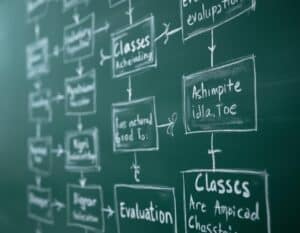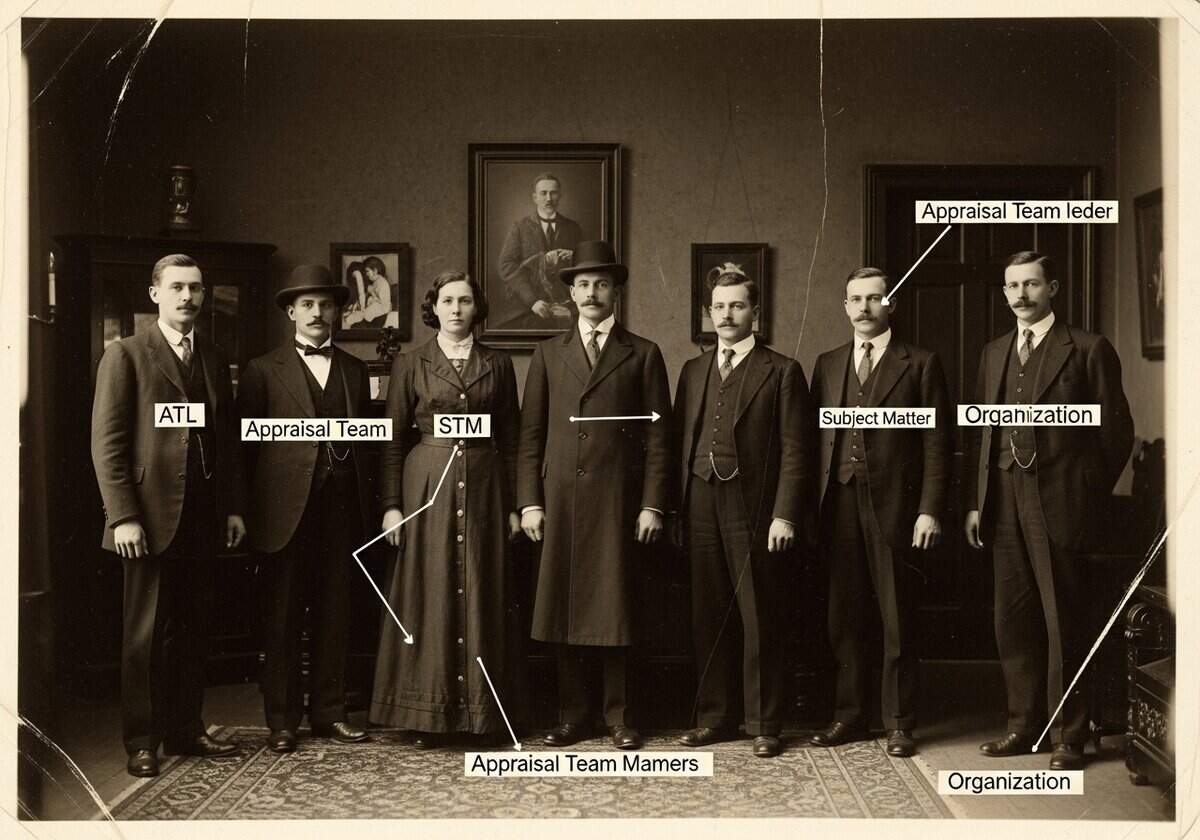The SCAMPI methodology, or Standard CMMI Appraisal Method for Process Improvement, is the method in enhancing organizational capabilities through rigorous evaluation and continuous improvement. According to the Carnegie Mellon Software Engineering Institute, organizations that implement CMMI frameworks experience a 35% improvement in process performance over time, demonstrating the tangible benefits of structured appraisal processes. This article thoroughly explores the SCAMPI framework, detailing its objectives, classification of appraisal types (Classes A, B, and C), the key phases involved in the SCAMPI appraisal process, and the essential roles required for effective evaluations.
النقاط الرئيسية

- SCAMPI provides a structured approach for process improvement.
- Evaluation identifies strengths and weaknesses of processes.
- Three classes (A, B, C) define assessment rigor.
- Key phases include preparation, execution, and reporting.
- Lead appraisers guide the appraisal teams efficiently.
- Promotes organizational maturity across various sectors.
Definition of SCAMPI and its Framework
SCAMPI, which stands for Standard CMMI Appraisal Method for Process Improvement, is a structured assessment approach designed to evaluate and enhance process capability within organizations. It is rooted in the Capability Maturity Model Integration (CMMI), a proven framework used for process improvement in software engineering and systems engineering.
The SCAMPI methodology facilitates organizations in identifying strengths and areas needing enhancement by conducting thorough evaluations that align with predefined maturity levels, which range from Level 1 (Initial) to Level 5 (Optimizing).
The detailed CMMI Framework can be found here (recommended before this detailed SCAMPI):
The SCAMPI framework comprises various components, including appraisal protocols, guidelines, and a set of objectives that drive the evaluation process. Within this framework, three classes of appraisals are distinctly identified, an organization being able to choose a specific class based on its goals, size, and specific industry requirements:
- Class A provides the most rigorous assessment, involving comprehensive data collection and analysis
- Classes B and C offer varying degrees of depth and focus.
Additionally, the methodology serves as a mechanism for ensuring compliance with industry standards and government regulations. Organizations involved in defense contracting or quality assurance must adhere to strict guidelines, making SCAMPI crucial in demonstrating accountability and reliability. Appraisals can uncover areas needing corrective actions, enabling organizations to maintain compliance while improving their operational readiness.
نصيحة: organizations should integrate SCAMPI objectives into their strategic planning to ensure alignment between resource allocation and process improvement initiatives. This alignment can lead to optimized investments in training and technology, further amplifying the impact of the SCAMPI methodology in details across all levels of the organization.
SCAMPI Classes and Their Specific Applications
SCAMPI (Standard CMMI Appraisal Method for Process Improvement) exists in three distinct classes, each designed to serve different appraisal needs and contexts.
- Class A appraisals: are the most comprehensive, requiring a full evaluation of an organization’s processes against the CMMI model. This class is utilized to assess an organization’s capability for achieving maturity levels and is critical for large-scale projects where compliance and risk management are paramount. For instance, a defense contractor may undergo a Class A appraisal to ensure that their processes meet strict DOD standards for program management, leading to improved project success rates and reduced life-cycle costs. Typical total duration: 6-8 weeks.
- Class B appraisals: offer an intermediate approach, typically conducted with less rigor than Class A. This class is suitable for organizations looking to gain insight into their process strengths and weaknesses without committing to a full assessment. The findings can guide targeted improvements, which can lead to an increase in both efficiency and customer satisfaction. Typical total duration: 4-6 weeks.
- Class C appraisals: are the least formal and are commonly used for internal assessments or benchmarking against industry standards. They help organizations identify process areas needing improvement without the associated costs of higher classes. Frequently, small businesses adopt this class to establish foundational practices that support future growth. A notable benefit is that Class C appraisals can reveal quick wins in process improvement, enabling rapid feedback loops for ongoing enhancement. Typical total duration: 2-4 weeks.
The choice among these classes depends on several factors including organizational goals, current maturity level, and regulatory requirements. Organizations might consider utilizing a Class A for formal recognition by external stakeholders, while opting for Class B or C for internal audits or pilot projects.
The SCAMPI Appraisal Process
Essential Roles in the SCAMPI Evaluation
| The SCAMPI evaluation process relies on various roles that align to ensure an effective appraisal of an organization’s process maturity: |  |
| The Appraisal Team Leader (ATL): directs the overall evaluation, functioning as a mediator between the organization and the SCAMPI team. The ATL must possess extensive experience in appraisal methodologies and should ideally have completed related training. A successful ATL streamlines communication, coordinates schedules, and ensures that all team members possess the necessary skills to perform their roles efficiently. | The Appraisal Team Members (ATMs): who perform several tasks, including data collection, document review, and observation during interviews. ATMs bring subject matter expertise in specific domains, which is crucial for making informed judgments about the organization’s practices. These members are also responsible for verifying that evidence aligns with appraisal criteria laid out in the SCAMPI methodology in details. |
| Subject Matter Experts (SMEs): also play a significant part in the SCAMPI evaluation, providing targeted insights into areas such as technical practices, risk management, and quality assurance. SMEs enhance the appraisal accuracy, ensuring that findings are well-founded. | The Organization representative: this individual assists the appraisal team in understanding the organizational context, policies, and existing practices. He is responsible for facilitating meetings, actively engaging in discussions and offering organizational insights, he bridges the gap between the SCAMPI evaluation team and the internal processes. |
The SCAMPI Steps
The SCAMPI appraisal process consists of distinct phases designed to assess and improve organizational processes systematically:
| SCAMPI Class A Appraisals | SCAMPI Class B Appraisals | SCAMPI Class C Appraisals | |
|---|---|---|---|
| 1. Initiation & Purpose | Specific: sponsor authorizes for official maturity/capability level rating, benchmarking, or supplier qualification. SEI-Authorized Lead Appraiser is mandatory. Objectives and scope are formally defined and documented. | Specific: sponsor defines purpose, typically for internal process improvement, initial gap analysis, risk identification, or progress tracking between Class A appraisals. Lead Appraiser is CMMI knowledgeable but not necessarily SEI-authorized. Objectives and scope are more flexible. | Specific: sponsor defines a very specific, narrow focus (e.g., health check of a single process area, readiness for a minor change, or verifying a specific practice). Often conducted by internal personnel with CMMI knowledge. Emphasis on quick turnaround and targeted insight. |
| 2. Planning... |
لقد قرأت 24% من المقال. الباقي لمجتمعنا هل أنت عضو بالفعل؟ تسجيل الدخول
(وأيضًا لحماية المحتوى الأصلي لدينا من روبوتات الكشط)
مجتمع الابتكار العالمي
تسجيل الدخول أو التسجيل (100% مجاناً)
اطلع على بقية هذه المقالة وجميع المحتويات والأدوات الخاصة بالأعضاء فقط.
فقط المهندسون والمصنعون والمصممون والمسوقون الحقيقيون المحترفون.
لا روبوت، ولا كاره، ولا مرسل رسائل غير مرغوب فيها.









متاح للتحديات الجديدة

مهندس ميكانيكي، مشروع، هندسة العمليات أو مدير البحث والتطوير
متاح لتحدي جديد في غضون مهلة قصيرة.
تواصل معي على LinkedIn
تكامل الإلكترونيات المعدنية والبلاستيكية، التصميم مقابل التكلفة، ممارسات التصنيع الجيدة (GMP)، بيئة العمل، الأجهزة والمواد الاستهلاكية متوسطة إلى عالية الحجم، التصنيع المرن، الصناعات الخاضعة للتنظيم، شهادات CE وFDA، التصميم بمساعدة الحاسوب (CAD)، Solidworks، الحزام الأسود من Lean Sigma، شهادة ISO 13485 الطبية
نحن نبحث عن راعي جديد
هل شركتك أو مؤسستك متخصصة في التقنية أو العلوم أو الأبحاث؟
> أرسل لنا رسالة <
احصل على جميع المقالات الجديدة
مجاني، لا يوجد بريد عشوائي، ولا يتم توزيع البريد الإلكتروني ولا إعادة بيعه
أو يمكنك الحصول على عضويتك الكاملة -مجانًا- للوصول إلى جميع المحتويات المحظورة >هنا<
منشورات ذات صلة
أكثر من 25 إرشادًا للذكاء الاصطناعي لتطبيق Lean 6 Sigma
أفضل 25+ من إرشادات الذكاء الاصطناعي لمهندسي التصنيع والمديرين
جميع الحروف اليونانية ورموز الرياضيات للعلوم
أحدث المنشورات وبراءات الاختراع في مجال الحوسبة الفوتونية
أحدث المنشورات وبراءات الاختراع حول روبوتات السرب
أحدث المنشورات وبراءات الاختراع في مجال الشبكات الذكية وإدارة الطاقة